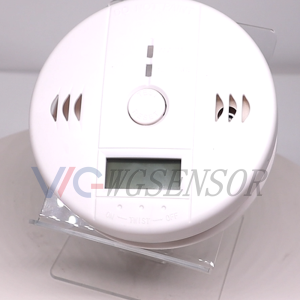Introduction:
Carbon monoxide (CO) is a colorless, odorless gas that poses a serious threat to human health. Often referred to as the “silent killer,” carbon monoxide can be produced by incomplete combustion of fossil fuels in appliances such as gas stoves, furnaces, and water heaters. To safeguard against this invisible danger, carbon monoxide alarms play a crucial role in protecting lives. This article aims to provide a comprehensive understanding of carbon monoxide alarms, their significance, and how they work.
1. Importance of Carbon Monoxide Alarms:
Carbon monoxide is lethal even in small concentrations, making it imperative to have a reliable detection system in place. The primary purpose of carbon monoxide alarms is to alert occupants when CO levels reach a potentially dangerous threshold, allowing them to evacuate the premises and seek fresh air.
2. How Carbon Monoxide Alarms Work:
Carbon monoxide alarms utilize sensors to detect the presence of CO in the air. The most common types of sensors include electrochemical sensors, biomimetic sensors, and metal oxide semiconductor sensors. Electrochemical sensors are widely used due to their high accuracy and sensitivity.
When CO is detected, the alarm triggers a loud audible alert, signaling the potential danger. Modern carbon monoxide alarms may also have digital displays that indicate the level of CO present. It’s crucial to install alarms on each level of a home and near sleeping areas for maximum effectiveness.
3. Installation and Maintenance:
Proper installation and regular maintenance are essential for the effective functioning of carbon monoxide alarms. Install alarms according to manufacturer guidelines, typically at eye level and away from sources of airflow. Regularly test the alarms, replace batteries as needed, and replace the entire unit according to the manufacturer’s recommended timeframe.
4. Legal Requirements and Standards:
Many jurisdictions have recognized the importance of carbon monoxide alarms and have implemented regulations requiring their installation in residential and commercial buildings. Adhering to these regulations helps ensure the safety of occupants and compliance with legal standards.
5. Additional Safety Measures:
While carbon monoxide alarms are critical, they should be part of a comprehensive approach to safety. Regular maintenance of fuel-burning appliances, proper ventilation, and awareness of potential sources of carbon monoxide are equally important in preventing exposure.
Conclusion:
Carbon monoxide alarms are indispensable tools for safeguarding against the dangers of this silent and deadly gas. By understanding their significance, how they work, and the importance of proper installation and maintenance, individuals can take proactive measures to protect themselves and their loved ones from the potentially fatal effects of carbon monoxide poisoning.


Please contact us for free quotation by form below. We promise the quickest response within 24 hours: